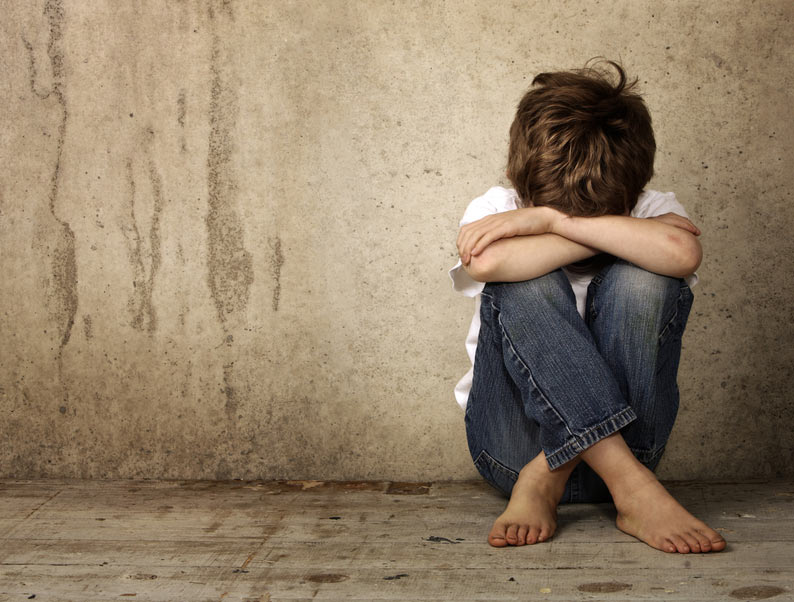
Is Child Sexual Abuse on the Rise?

With the stream of accusations of child sexual abuse not losing any gusto lately, from the ever-growing charges against former Penn State football coach Jerry Sandusky to allegations of such behaviors by assistant basketball coach Bernie Fine, it'd be easy to assume a real upsurge in such abuse.
But that may not be the case.
First, Sandusky was accused of sexually molesting at least eight boys over the past 15 years; he has pleaded not guilty to the more than 40 charges against him.
Then last week Fine of Syracuse University was fired amid accusations of sexual abuse. So far three men, including two former Syracuse ball-boys, have come forward stating that Fine molested them as minors.
Neither Sandusky nor Fine has been found guilty of any crime, but these are only the latest in what seems to be a year filled with news reports about sexual harassment and sexual abuse. Earlier this year an ABC News investigation revealed that USA Swimming (the governing body for the sport up to and including the U.S. Olympic team) has banned for life nearly 40 swimming coaches over the last decade because of sexual misconduct. [Child Abuse: Why People Look the Other Way]
So what's going on?
According to the nation's top experts, children are actually safer from physical and sexual abuse than they have been for decades. A National Incidence Study of Child Abuse and Neglect issued by the Department of Health and Human Services found that both physical and sexual abuse of children have dropped significantly over the past 20 years: From 2005 to 2006, an estimated 553,000 children suffered physical, sexual or emotional abuse, down 26 percent from the estimated 743,200 abuse victims in 1993. And between 1993 and 2005, the number of sexually abused children dropped 38 percent, while number of children who experienced physical abuse fell by 15 percent and those who were emotionally abused declined by 27 percent.
Get the world’s most fascinating discoveries delivered straight to your inbox.
In fact, incidence of sexual abuse of children began to drop two decades ago, according to Dr. David Finkelhor, director of the Crimes Against Children Research Center at the University of New Hampshire.
In his book "Childhood Victimization: Violence, Crime and Abuse in the Lives of Young People" (Oxford 2008), Dr. Finkelhor notes, "The child victimization declines of the 1990s were something new, and not simply the extension of trend lines from the past. For example, available data on child abuse show strong increases in all forms of maltreatment from the mid-1970s into the 1990s. After a short plateau, the sexual abuse decline seemed to start in 1992, and the physical abuse decline gained momentum after 1996. Many analysts did not interpret the earlier rise as necessarily indicative of a real increase in child maltreatment but rather as the result of a new public and professional mobilization to identify and report cases. But some data suggested real increases in the 1980s."
Overall, Dr. Finkelhor told LiveScience.com, "There is very little evidence that child sexual abuse is on the rise in the U.S., and considerable evidence that it is declining, including data from law enforcement, child protection and surveys of victims themselves." He added that though the prevalence of child sexual abuse worldwide is hard to assess, "there are some indicators of decline in other countries such as Canada and the United Kingdom."
Many of the recent accusations of sexual abuse date back many years; just because the public is hearing more about it now doesn't mean that it's on the increase. Thus while the barrage of news reports about sexual abuse of children may make parents fearful, the reality is that kids today are safer than ever.
Causes of the drop in child sexual abuse are complex and not completely understood. Some experts point out that the overall crime rate dropped significantly during the same time, and that child abuse rates fell along with murder and assault rates. Other analyses credit the economic prosperity of the 1980s and 1990s as improving overall social conditions, while still others note that tougher penalties for sex crimes led to higher numbers of offenders being jailed. It's also likely that greater social awareness of child abuse through television news (and even Hollywood films such as "Mystic River") resulted in parents taking more precautions for their children's safety. Like most social problems, there's no simple answer.
Benjamin Radford is deputy editor of Skeptical Inquirer science magazine and author of Media Mythmakers: How Journalists, Activists, and Advertisers Mislead Us. His Web site is www.BenjaminRadford.com.



